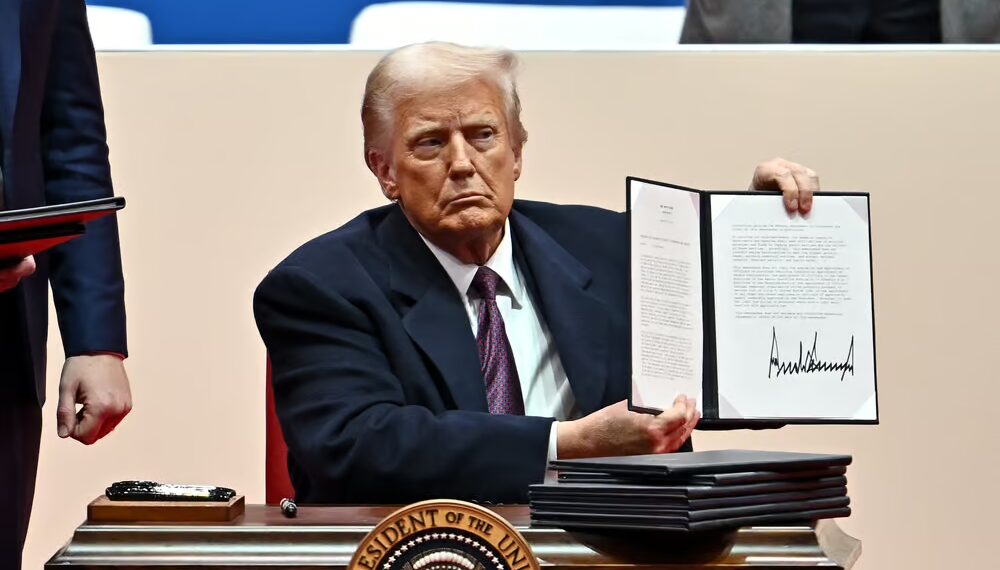US President Donald Trump has signed an executive order declaring the United States’ intent to withdraw from the World Health Organization (WHO), citing its alleged mismanagement of global health crises, including the COVID-19 pandemic.
This marks the second time Trump has ordered the US to disengage from the WHO.
He first initiated the withdrawal in 2020, criticizing the organization’s handling of the pandemic, its failure to implement necessary reforms, and its inability to maintain independence from political influences by certain member states.
Trump also highlighted financial disparities, condemning the “unfairly onerous payments” demanded of the United States compared to other nations. “China, with a population of 1.4 billion, has 300 percent of the population of the United States, yet contributes nearly 90 percent less to the WHO,” he stated.
“By the authority vested in me as President by the Constitution and the laws of the United States of America, it is hereby ordered,” Trump declared, marking a renewed effort to sever US ties with the organization and pursue alternative strategies for global health leadership
Key provisions of the executive order
- The decision includes the revocation of a Presidential Letter sent to the United Nations on January 20, 2021, which had previously reversed the U.S.’s July 6, 2020, withdrawal notice.
- Additionally, Executive Order 13987, signed on January 25, 2021, which organized a U.S. government response to Provide a Unified and Effective Response to Combat COVID–19 and to Provide United States Leadership on Global Health and Security, has also been revoked.
- The President has directed the Assistant to the President for National Security Affairs to establish necessary directorates and coordination mechanisms within the National Security Council to safeguard public health and fortify biosecurity.
- The Secretary of State, along with the Director of the Office of Management and Budget, has been instructed to promptly halt any future transfers of U.S. funds, support, or resources to the WHO.
They are also tasked with recalling and reassessing U.S. personnel and contractors working with the WHO and identifying credible U.S. and international partners to take over essential activities previously managed by the organization.
Furthermore, the Director of the White House Office of Pandemic Preparedness and Response Policy is required to review, rescind, and replace the 2024 U.S. Global Health Security Strategy in alignment with the new executive actions.
Implementation measures
The Secretary of State has been directed to immediately inform the Secretary-General of the United Nations, any other applicable depositary, and the leadership of the World Health Organization (WHO) of the United States’ decision to withdraw from the organization.
- As part of the ongoing withdrawal process, the Secretary of State will cease negotiations on the WHO Pandemic Agreement and the amendments to the International Health Regulations, and actions taken to effectuate such agreement and amendments will have no binding force on the United States.
- The executive order includes several general provisions, clarifying that nothing in the order will impair or affect the authority of any executive department or agency, nor will it alter the functions of the Director of the Office of Management and Budget regarding budgetary, administrative, or legislative proposals.
- The order will be implemented consistent with applicable law and subject to the availability of appropriations.
Additionally, it specifies that the order does not create any rights or benefits enforceable at law or equity by any party against the United States, its agencies, officers, or employees or any other person



